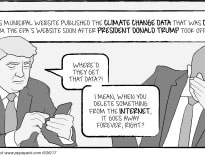In the early years of the 20th century, the world’s largest cities were grappling with a vexing transportation problem: horse manure. Almost all local travel at the turn of the century in developed cities was based on horse and carriage systems. This included passengers and goods. According to some sources, this problem was so pervasive that there were literally 100,000 working horses in New York City alone, generating 2.5 million pounds of manure and 200,000 pints of urine per day. This precipitated the “Great Horse Manure Crisis of 1894.”
To make matters worse, at this time working horses lived approximately three years. When they died in the course of transporting people and goods, the carcasses had to be removed from the streets. It is said that the carcasses were often left in the streets until they could be dismembered for easy removal.
The solution to the great horse manure crisis came in the form of the mass-produced automobile. Henry Ford revolutionized the transportation world with automobiles that were affordable and available to all. Within two decades, the entire problem was solved. Ford, it turns out, was the disruptive force in mobility in the early 20th century.
As we look towards the 21st century, there may be lessons from this time that can be applied to our rapidly evolving urban mobility. The problems to be solved in urban mobility are substantial: congestion; lost productivity; air pollution; climate change; environmental justice and access to opportunity; urban sprawl; resource depletion; death and injury due to automobile crashes; lost productivity due to automobile crashes – the list goes on and on. But before we lose hope, maybe the next Henry Ford is around the corner.
Change Is Difficult
There are multiple disruptive forces shaping the mobility ecosystem right now. Many of them hold promise to address the challenges of our day. For instance, the sharing economy is democratizing mobility and could revolutionize access to opportunity. Autonomous vehicles have great potential to reduce congestion and reduce crashes. Electric vehicles will almost certainly put a nail in the coffin of fossil fuels, reducing air pollution, easing climate change and improving public health.
Like the early 20th century, there is much trepidation about today’s changes. Change does not come easy, and generally requires people to have an open mind. In every society, there is a certain amount of the population that does not have an open mind. For these members of our communities, change will be difficult and rife with angst.
One lesson that can be learned from the great horse manure crisis is that consumer products will be the catalyst for change. Ford’s automobile captured the imagination of an emerging middle class. In so doing, mobility was revolutionized through consumerism.
Modern trends are very similar. Less than 25 years ago, cell phones were just emerging as a consumer product. Now they are ubiquitous, holding the computing power of a mainframe computer in a palm-sized device. Today we think nothing of the technological marvel of smartphones, but the cell phone is truly as revolutionary as Henry Ford’s car.
How many of us used “uber” as a verb and a noun even as recently as five years ago? Very few. Now, it is a household name. And the service has completely revolutionized the mobility landscape.
The cell phone and Uber are both consumer-driven innovations. They were wildly successful because consumers wanted them, and drove constant innovation and adoption. In the 21st century, the world of mobility will continue to evolve based on consumer-driven innovation.
More innovation is coming. And it is going to happen fast. Perhaps as fast as the cell phone or the automobile. It may just happen even faster than these two consumer innovations. The implications of Moore’s Law on the pace of technological change likely mean faster and faster adoption of new technologies.
The real lesson to be learned from the great horse manure crisis is that disruptive innovation is the catalyst for change. Not all change is good: if we knew in 1910 that the automobile would cause so many problems, perhaps we would have come up with a different solution. Oftentimes change creates new problems. But we must try to solve problems, even if we invoke the laws of unintended consequences. In short, we need to try something to address our current mobility challenges. Bring on the innovation.
William F. Lyons Jr. is president of Fort Hill Cos. of Boston.




 |
| 

